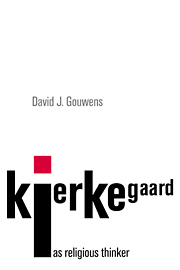Book contents
- Frontmatter
- Contents
- Acknowledgements
- List of abbreviations
- Introduction
- 1 Diseases of reflection
- 2 Anthropological reflection
- 3 Becoming religious: upbuilding before God
- 4 Becoming Christian I: responding to Christ in faith
- 5 Becoming Christian II: suffering and following Christ in hope
- 6 Becoming Christian III: love and imitating Christ in works
- 7 Witness in faith, hope, and love
- Conclusion
- Bibliography
- Index
4 - Becoming Christian I: responding to Christ in faith
Published online by Cambridge University Press: 14 October 2009
- Frontmatter
- Contents
- Acknowledgements
- List of abbreviations
- Introduction
- 1 Diseases of reflection
- 2 Anthropological reflection
- 3 Becoming religious: upbuilding before God
- 4 Becoming Christian I: responding to Christ in faith
- 5 Becoming Christian II: suffering and following Christ in hope
- 6 Becoming Christian III: love and imitating Christ in works
- 7 Witness in faith, hope, and love
- Conclusion
- Bibliography
- Index
Summary
Sins' forgiveness belongs to the pure God-relationship, far beyond sin – and virtue.
JP11 1218 (Pap. ix a 482, n.d, 1848).Faith … is a battle of character.
JP11 1129 (Pap. x a 367, n.d., 1849).Thus far we have examined Kierkegaard's psychological, moral, and religious analyses of human existence: his diagnostic critiques of misplaced objectivity, his anthropological reflection relating psychology and theology, and his carefully textured portrayals of how the emotions, passions, and virtues are shaped in ethicoreligious existence. And we have seen too his rethinking of the “virtue tradition” in the context of Religiousness A. All of this is prologue, however, to his central interest, depicting the logic and passions of Christian faith.
In chapters 4–6, we turn to “becoming and being a Christian.” Wittgenstein suggested that in looking at religious images and stories we need to see how they are used. This study is an exercise in the use of the portrayal of Christ as Redeemer and Pattern, and Kierkegaard's concern to see Christian existence as centrally response to Christ. We will explore this in terms of his investigations of upbuilding in the Christian passions or virtues of faith, hope, and love.
Kierkegaard wrote that “the category for my undertaking: is to make men aware of the essentially Christian.” Possessing less a sense and taste for the infinite than a sense and taste for the particular, his interest is in the specific shape and dynamics of Christian faith.
- Type
- Chapter
- Information
- Kierkegaard as Religious Thinker , pp. 122 - 152Publisher: Cambridge University PressPrint publication year: 1996



